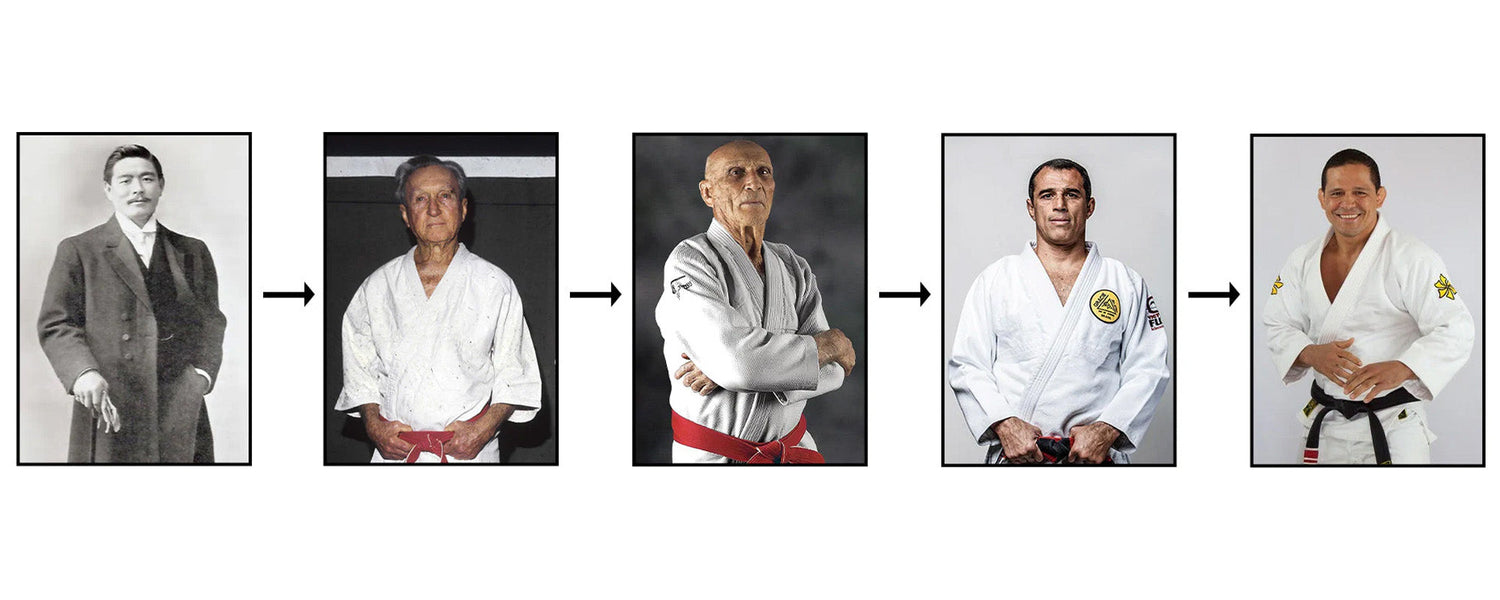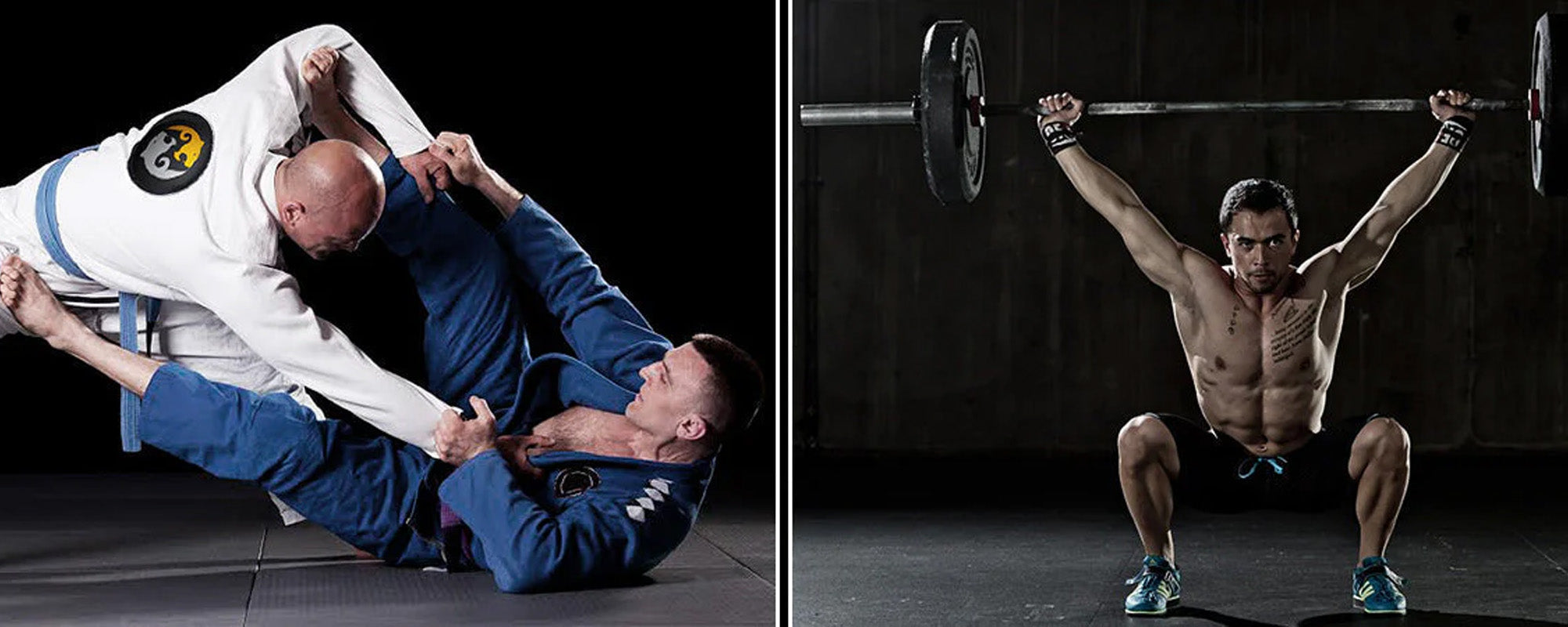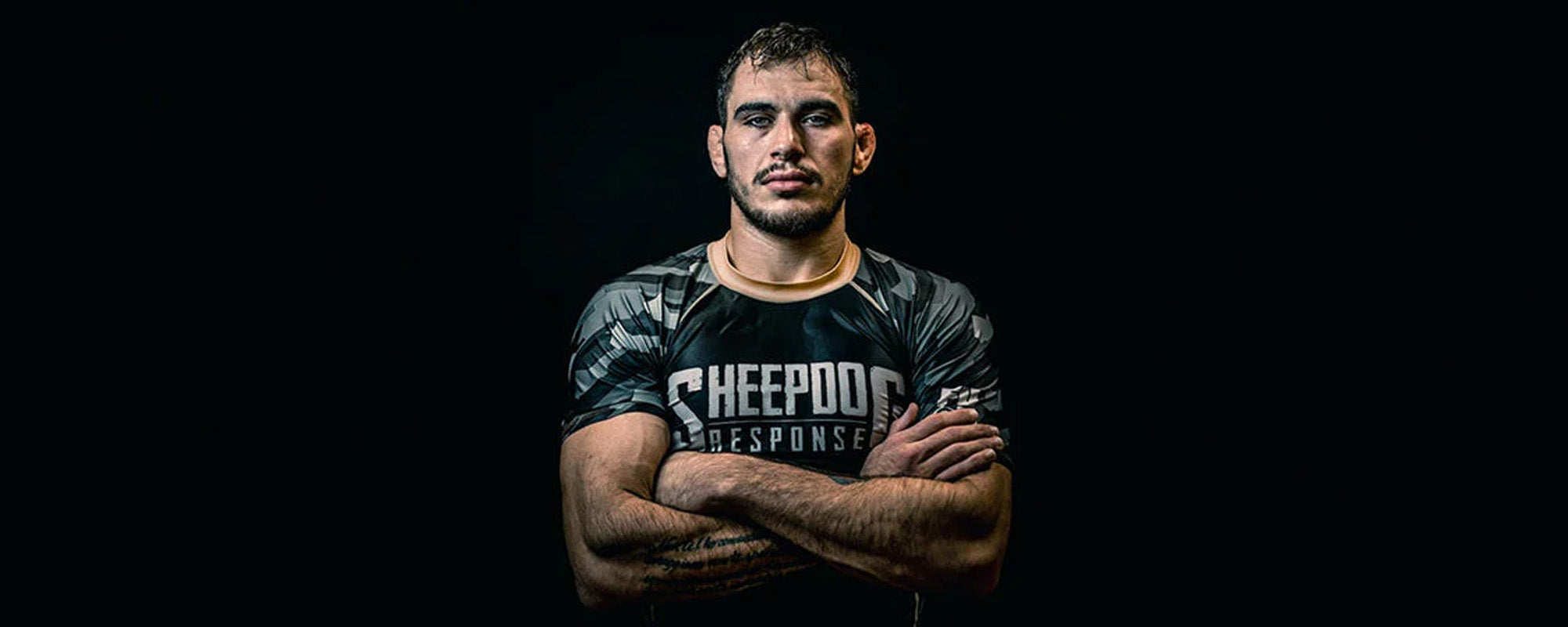The BJJ belt lineage system is an important part of BJJ. The success of a BJJ practitioner depends on his techniques and training. If the practitioner got training from a high belt lineage instructor, his BJJ career will definitely thrive. But if he becomes prey to a fake belt, his time and money can be wasted.
The BJJ belt lineage system makes sure that the practitioner is an authentic one by tracing his lineage back to the Gracies, the founders of Brazilian Jiu-Jitsu, or other renowned coaches such as John Danaher.
Table of content
1. What is The BJJ Belt Lineage?
BJJ belt lineage refers to those who awarded the practitioner with a BJJ belt. It indicates the level of a student within a given belt rank. It is a traditional concept in BJJ which symbolizes the rank of the practitioner. It signifies the amount of year and effort a practitioner has put in to reach a certain level of excelling at gentle art. It shows how that belt can be traced back to the Gracie family.
Belt lineage tells about how skilled and professional the BJJ practitioner’s trainer has been. And it is also important that he obtained his BJJ Black Belt from a BJJ coach having Gracie lineage. As we all know, BJJ is a grappling combat sport. It involves chokeholds and submissions to gain victory over your opponent. The belt color explains the practitioner's mastery of BJJ.
2. BJJ Belt Lineage System
It is a traditional concept in BJJ. It refers to the loyalty of the practitioner towards his coach. It always refers to the coach who promoted a BJJ brown belt to the Black Belt level. And then the coach’s pedigree dates back to the Gracie family who originally started BJJ in Brazil.
2.1. History of BJJ Belt Lineage System
The martial art belt ranking system was originated by Jigoro Kano. He developed a simple belt system consisting of white, brown, and black belts.
3. The Gracie Family
A proper belt system was initiated by Helio and Carlos Gracie in 1952. Initially, this system was used only for those BJJ practitioners who wanted to become instructors. Along with a light blue belt, an instructor diploma was also given to the instructor.
Darker blue belts were entitled to professors in the gentle art. Black Belts were introduced in BJJ by the Gracies in the 1960s. Bars were also added on the belts which distinguish between students and masters. Students would receive a Black Belt with a white bar whereas instructors would receive Black Belts with red bars.
In 1967, the Belt lineage system was adopted by the Jiu-Jitsu Federation of Guanabara. Helio Gracie, Carlos Gracie, and other practitioners like Oswaldo Fadda attempted to develop BJJ in Brazil to spread gentle art.
3.1. Conde Kama
Conde Kama was a master who in 1915 traveled to Brazil. Gastao Gracie, a politician, helped him to establish a Japanese village in Brazil. In return, Code Kama taught BJJ to Gastao Gracie’s eldest son, Carlos Gracie.
3.2. Carlos Gracie
Conde Kama only taught Jiu-Jitsu techniques to Carlos Gracie. Except for Carlos, BJJ was unknown to the world. Carlos Gracie was an athletic and active child, so he quickly grasped Jiu-Jitsu techniques taught by Conde Kama. He taught Carlos Jiu-Jitsu in its purest form. When Conde Kama left Brazil after a year, Carlos dedicated himself to the art of Jiu-Jitsu.
Carlos learned the art with the purpose of self-improvement and self-defense. But later with his brother Helio Gracie, he reinvented Jiu-Jitsu into a martial art.
In 1925, Carlos moved to Rio de Janeiro. There he opened his own BJJ institute and began teaching sacred art to other BJJ students.
3.3. Helio Gracie
Helio Gracie learned gentle art from his brother. He could not learn BJJ from Conde Kama because of his weak physical health. When he learned BJJ, he modified the techniques in such a way that he reduced the amount of strength, explosiveness, and power to make the techniques work.
This modification then led to Gracie Jiu-Jitsu.
Royce, Rolls, Rickson, Rorion, Royler & Carlson Gracie
Helio Gracie taught BJJ to his sons, Carlson, Royce, Rolls, Rickson, Rorion and Royler Gracie. They eventually received their Black Belts from Helio Gracie.
Gracie Barra
Gracie Barra, one of the biggest BJJ franchises in the world, was founded by Carlos Gracie Jr. it was initially a BJJ school but due to many students enrolling in Gracie Barra, it split into many branches and today it stands as a franchise with over 800 branches around the globe.
3.4. Rolls Gracie
Rolls Gracie trained and taught at Carlson’s Copacabana Academy. He got his Black Belt from his father Helio Gracie.
Rolls Gracie taught BJJ to Romero Jacare Cavalcanti and Carlos Gracie Jr.
3.5. Romero Jacare Cavalcanti
Master Romero Cavalcanti spent many years training under Rolls Gracie and later got his Black Belt from Rolls Gracie. He trained with Fabio Santos, Mauricio Gomes, the Machados, Rickson Gracie, and many others. From 1972 to 1985, he extensively competed in BJJ. After that, he opened his own BJJ school and coached in Alliance Jiu-Jitsu.
Alliance Jiu-Jitsu
Alliance JJ is today one of the best BJJ schools with hundreds and thousands of students who receive extensive training and then establish a marvelous BJJ career.
4. BJJ Belt Divisions
BJJ belt divisions are used for ranking the skills of the BJJ practitioner. The different colors demonstrate the knowledge and ability of the practitioner.

4.1. White Belt
White Belt is the first rank in BJJ. The beginner gains fundamental knowledge of escapes and submissions. The focus of the white belt is to keep him safe. He learns to avoid unfavorable techniques applied by his opponent.
4.2. Blue Belt
Blue Belt is the 2nd belt in BJJ. It signifies a core competence and understanding of the art. A Blue Belt knows the philosophy of Jiu-Jitsu and a broad range of techniques. The defense game of a Blue Belt is also strong.
4.3. Purple Belt
Purple Belt is an advanced rank in Brazilian Jiu-Jitsu. The concept and techniques of BJJ started to inculcate in the mental and muscle memory of the purple belt practitioners. The defense and offense of a Purple Belt are very much refined.
4.4. Brown Belt
A Brown Belt has complete knowledge of BJJ techniques and defenses. He knows how to gain a dominant position.
4.5. Black Belt
Black Belt is the highest position in the BJJ belt lineage system. It shows that the practitioner has grasped full knowledge of BJJ and is a skilled practitioner. After becoming a Black Belt, practitioners do not stop their BJJ journey and reach Coral and Red Belts which demonstrate their exp[ert knowledge of the gentle art.
5. BJJ Belt Progression Timeline
| Belt | Average Total Years Training |
|---|---|
| White | — |
| Blue | 2-3 Years |
| Purple | 4-5 Years |
| Brown | 7-8 Years |
| Black | 10-11 Years |
5.1. IBJJF Time Period
| Belt | IBJJF Time Period | Minimum Age |
|---|---|---|
| White Belt | None | — |
| Blue Belt | No minimum age threshold (if < 18 years old) 2 Years (if 18 years or older) | 16 |
| Purple Belt | 2 Years (if < 18 years old) 1.5 years (if 18 years or older) | 16 |
| Brown Belt | 1 Year | 18 |
| Black Belt 1st- 6th Degree | 3 Years for each degree | 19 |
| Black Belt 7th Degree (Coral Belt) | 7 Years | 50 |
| Black Belt 8th Degree (Coral Belt) | 10 Years | 57 |
| Black Belt 9th Degree (Coral Belt) | Undefined | 67 |
| Black Belt 10th Degree (Red Belt) | Awarded only to the Pioneer Founders of Brazilian Jiu-Jitsu | N/A |
6. Why Does Belt Lineage Matter?
BJJ instructor lineage is that the BJJ practitioners train under those BJJ instructors who have learned the gentle art from the Gracie Family. Many BJJ practitioners seek guidance from those masters who are verified by any of the Gracie family members.
For example, if the instructor of a BJJ gym is a Royce Gracie Black Belt, more practitioners will seek training and coaching from him because of his status. Students will believe their instructor and follow him blindly.
“The water is always purest at its source”
6.1. The authenticity of a BJJ Practitioner
BJJ practitioners prefer those coaches who have high belt lineage, especially those who relate back to the Gracie family. It is because those coaches have more knowledge and skill set of BJJ that they impart to their students. For example, Gordon Ryan was awarded his Black Belt by John Danaher and John Danaher trained directly under Renzo Gracie. So Gordon Ryan’s belt holds authenticity.
6.2. Quality Training From a Certified BJJ Black Belt Instructor
A certified BJJ Black Belt instructor will instruct techniques to his students in such a way that they will learn a lot from him. Not only will the knowledge of the students about BJJ be enhanced but an efficient way of finishing techniques will appear in the practitioner's fighting style.
6.3. Lineage is about Respect
BJJ is a gentle art. BJJ practitioners display respect for BJJ and its philosophy while they are on the mat. Whenever a practitioner steps foot on the mat, he shows the passion, dedication, and hard work of his coaches who have invested in him. It is the hard work of the greatest people who started teaching Brazilian Jiu-Jitsu and it's all about keeping the legacy.
6.4. Lineage Preserves the Gentle Art
BJJ belt lineage preserves the art from becoming archaic or watering down. With the progression and innovation of techniques in BJJ, there is a chance that the gentle art might change slowly and turn into something that might not be in sync with Gracie’s vision.
To prevent that, the BJJ lineage keeps the art in the exact form as the Gracie family started it. By keeping BJJ in its exact form, practitioners pay homage to the Gracie family.
6.5. Fake Black Belts
BJJ belt lineage is important as it keeps the practitioner safe from falling prey to fake Black Belts. BJJ practitioners need to make sure that their coaches have a high belt lineage.
Jay Queiroz, a fake belt taught out of a small gym in the United States. He uploaded some instructional BJJ videos on his website. These videos caught the attention of Black Belt Mike Palladino. Palladino instantly noticed Jay’s faulty techniques and confronted him. It was then known that Jay Queiroz was only a White Belt.
Jay Queiroz’s single-leg takedowns were on the wrong side and he lacked control during Armbar. This was enough evidence for Palladino that Jay Queiroz was a fake belt and he cheated on his students by teaching them the wrong techniques and consuming all of their money.
Mike Palladino is a Black Belt under Rafael Barbosa, whose lineage traces back to Carlson Gracie through Crezio de Souza and Andre Almeida.
6.6. Represents the Knowledge Passed Down
BJJ belt lineage refers to who mentored, trained, and awarded ranks to the practitioner. It enlightens the practitioners with the knowledge of their coaches as well as those who came before them, hence leading to the forefathers of BJJ.
6.7. Signify the Level of Competence
It displays the level of competence a practitioner holds as he has trained from those coaches who have been trained by the Gracies. For example, Marcus Buchecha Almeida who is trained by Rodrigo Cavaca, not only has the knowledge his coach had but also of Elcio Figueiredo, Carlson Gracie, and Carlos Gracie.
After winning BJJ tournaments and championships the practitioner showcases his BJJ knowledge and his competence level.
6.8. Success in Competition
A BJJ practitioner getting trained by a high belt lineage instructor is most likely to win competitions and tournaments. The practitioner will have an amazing BJJ career. Many BJJ fighters are present who sought training from instructors who in turn got training from the gracious and established such marvelous coaching careers.
6.9. Sense of Recognition
It leaves the practitioner with a sense of recognition and validation that they got the right training and have learned correct BJJ techniques. It boosts the confidence of the practitioner.
7. Famous BJJ Champions
7.1. Marcus Buchecha Almeida
Marcus of famous for his 6 IBJJF World Championship titles in the open weight category. He is a 2nd degree BJJ Black Belt. He is an IBJJF Hall of Famer.

Lineage
Carlos Gracie -> Carlson Gracie -> Elcio Figueiredo -> Rodrigo Cavaca -> Marcus Almeida
7.2. Bianca Andrade
Bianca Andrade is a 5th-Degree BJJ Black Belt. She is one of the best female competitors in the history of BJJ. She is an IBJJF Hall of Famer.

Lineage
Mitsuyo Maeda -> Carlos Gracie -> Helio Gracie -> Pedro Hemeterio -> Banni Cavalcanti -> Diojone Farias -> Bianca Andrade
7.3. Bruno Da Silva Malfacine
Bruno da Silva is a BJJ Black belt. He is regarded as the best rooster weight in BJJ with 9 IBJJF World titles. He is an IBJJF Hall of Famer.

Lineage
Mitsuyo Maeda -> Carlos Gracie -> Helio Gracie -> Carlson Gracie -> Vinicius Amaral -> Bruno Malfacine
7.4. Saulo Mendonca Ribeiro Filho
Saulo Ribeiro is a 4th-Degree BJJ Black Belt. He is a 5 times World Champion. He is an IBJJF Hall of Famer.

Lineage
Mitsuyo Maeda -> Carlos Gracie -> Helio Gracie -> Royler Gracie -> Saulo Ribeiro
7.5. Kyra Gracie
Kyra Gracie is a 4th-Degree BJJ Black Belt and an IBJJF Hall of Famer. She is the first-ever female BJJ fighter to be included in the ADCC Hall of Fame.

Lineage
Mitsuyo Maeda -> Carlos Gracie Sr. -> Carlos Gracie Jr. -> Kyra Gracie
8. Belt Lineage Used as a Market Tool to Open a BJJ Institute
BJJ belt lineage can be used by a BJJ practitioner to open his own gym/institute. If a BJJ Black Belt is certified as his lineage tracks back to the Gracies, beginners will absolutely trust him with their career and his own business can thrive.
9. Critic’s Opinion
According to critics, BJJ belt lineage is not necessary as it is considered & some differ. They believe that BJJ is all about skills. If a fighter does not have Gracie belt lineage that does not mean he is not a good fighter or he trained under fake belt instructors.
The BJJ belt lineage system helps to keep the art real and in the same condition as the Gracies wanted it to be.
10. FAQs
10.1. How Important is the BJJ Belt Lineage System?
The BJJ belt lineage system is important as it refers to the BJJ instructor who awarded the practitioners with his BJJ Black Belt. It signifies the competence level of the practitioner.
10.2. What are Stripes in the BJJ Belt System?
Stripes are present on Brazilian Jiu-Jitsu belts. They are used to indicate the level of students within a given belt rank. For example, a practitioner with 4 stripe Blue Belt is on a higher level than a practitioner with 2 stripe Blue Belt.
11. Conclusion
Belt lineage matters a lot in BJJ. It makes the practitioner aware of his own skill set as well as he learns the techniques which come directly from the founders of Brazilian Jiu-Jitsu. It makes the practitioner an authentic BJJ belt holder.
Photo Credit: @juberajj , @delawarejiujitsu , @graciejiujitsustpete , @graciebarra , @wikipedia












Leave a comment
This site is protected by hCaptcha and the hCaptcha Privacy Policy and Terms of Service apply.